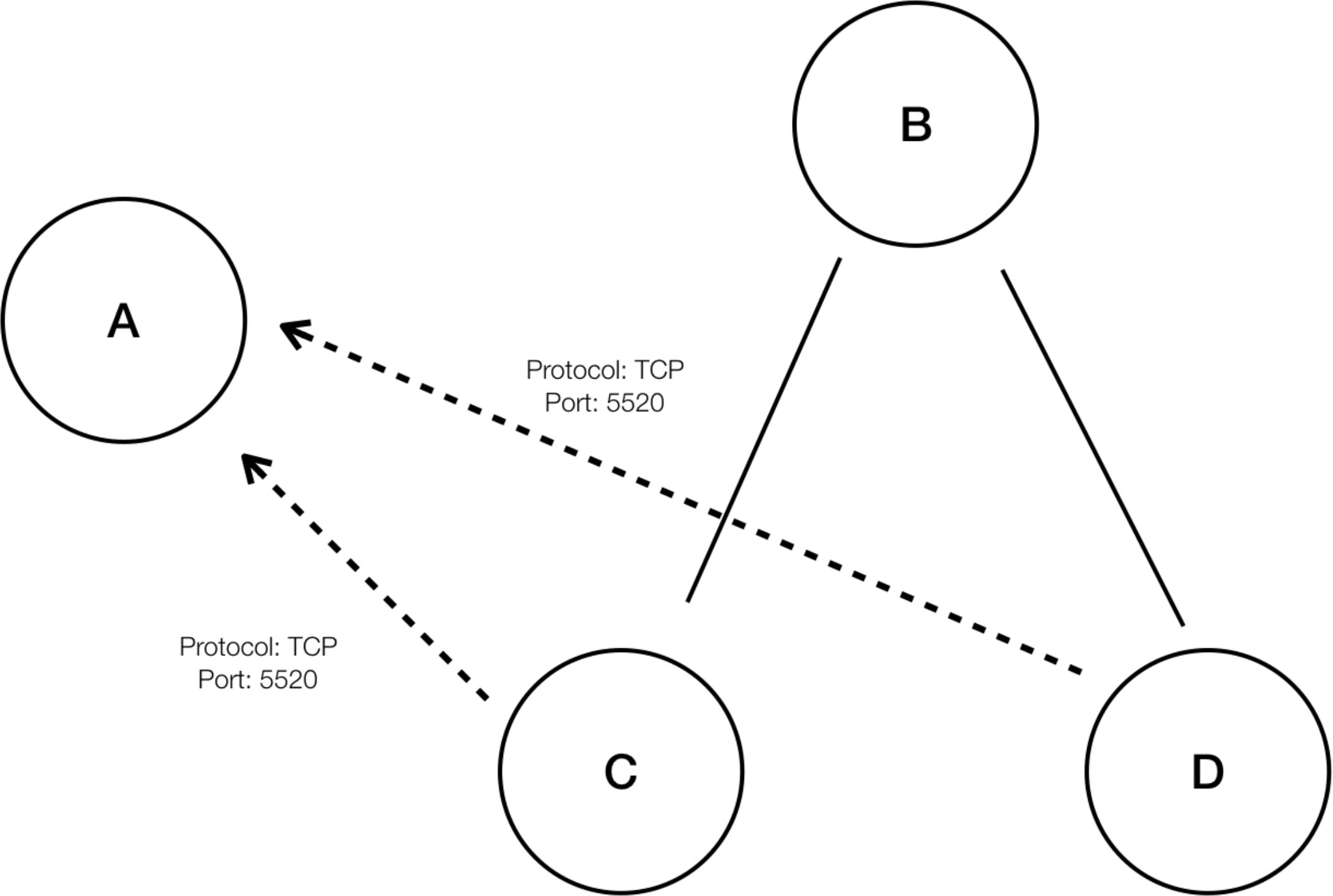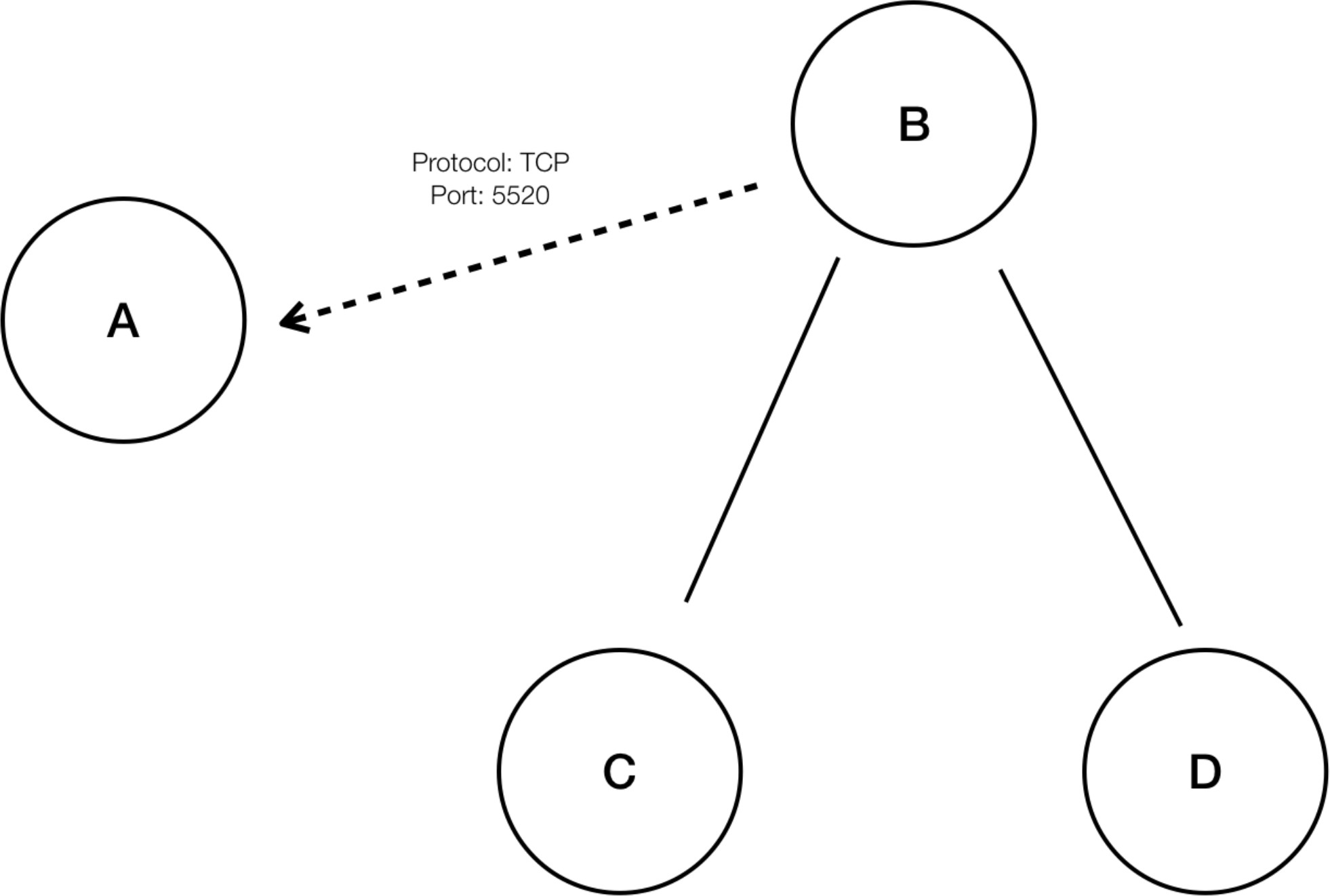Hierarchical policy compression
Policy compression can also be done when generating policies for a branch of the scope tree. The policy compression knob can be used to alter the level of aggressiveness in hierarchical policy compression. An example of hierarchical policy compression is illustrated below.
-
Let A, B, C and D be scopes part of a scope tree, where “C” and “D” are the child scopes of “B”. Let “C” → “A” be a TCP “ALLOW” policy on port 5520 and “D” → “A” be TCP “ALLOW” policy on port 5520.

-
With hierarchical policy compression if a sufficiently large group child scopes involves in policies sharing the same port, protocol and destination or source, these policies will be replaced by a generalized policy that connects the parent scope to the common source or destination. In the above mentioned case “C” and “D” are child scopes of “B” and the policies “C” → “A” and “D” → “A” share the same destination, port and protocol. Since 100% of child scopes of “B” contain the similar policy the policy will be promoted to be “B” → “A”, resulting in the following. Furthermore, hierarchical compression can be repeated so a generalized policy can go all the way to the root of the subtree (branch of the scope tree) .

-
The policy compression knob allows you to tune the aggressiveness of such compression, by changing the minimum required proportion of the policy-sharing child scopes (usually measured as the fraction of total number of child scopes) to trigger the compression. When disabled, each policy is generated between highest priority scopes based on the External Dependencies list. Subsequently, if you choose to impose the naturally ordered External Dependencies list, the policies generated will be the most granular policies among scopes.
